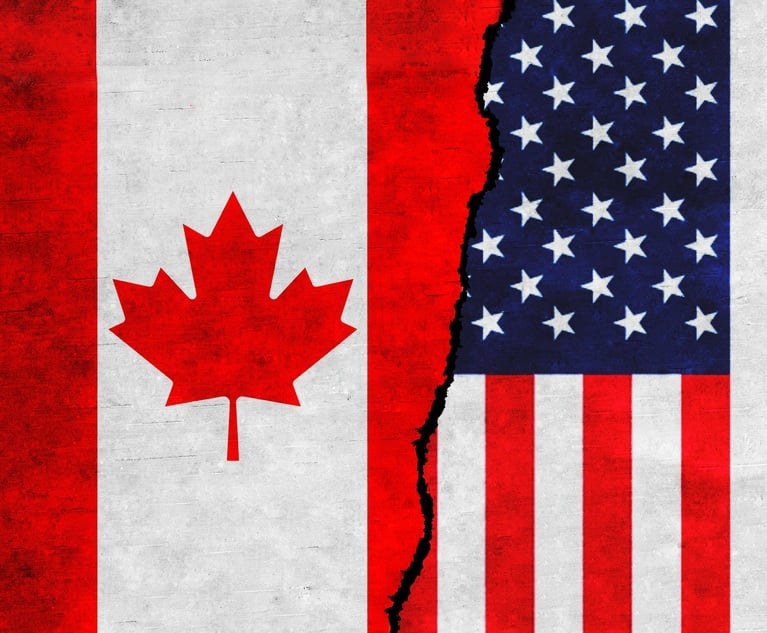EU: Naming and shaming
93 airlines have been singled out by a European Commission 'blacklist'
April 26, 2006 at 08:03 PM
5 minute read
 On 22 March, 2006, the European Commission (EC) published a blacklist of airlines banned from operating into and out of the European Union (EU), including Norway and Switzerland, under EC Regulation 2111/2005, which came into force in January 2006.
On 22 March, 2006, the European Commission (EC) published a blacklist of airlines banned from operating into and out of the European Union (EU), including Norway and Switzerland, under EC Regulation 2111/2005, which came into force in January 2006.
The blacklist predominantly comprises carriers from five African countries – the Democratic Republic of the Congo, Equatorial Guinea, Liberia, Sierra Leone and Swaziland. These countries have been singled out due to their airlines' poor safety records and the failure by their civil aviation authorities charged with maintaining safety standards to implement adequate regulatory oversight.
This legislation has been in the pipeline since the 1996 crash of a Birgenair Boeing 757 in the Dominican Republic. It was after this incident that the European Parliament pressurised the EC to draw up a 'blacklist' of airlines which fell short of international safety standards.
In May 2005, a Turkish airline, Onur Air, which was suspended in France, circumvented restrictions by requiring passengers to fly from Charleroi airport in Belgium, with the effect that although it was blacklisted in one country, it was still free to operate from neighbouring states.
Prior to the publication of an EU-wide blacklist, individual national aviation authorities operated their own blacklists and had the power to suspend airlines from operating in their airspace on safety grounds. However, there was no obligation on those national aviation authorities to act upon the safety concerns of other member states or third countries, resulting in a patchwork of rules governing 'suspect' airlines flying in Europe. This became apparent in August 2005 when France, Belgium and Switzerland published their national blacklists comprising different airlines, with no airlines involved in recent crashes appearing on them.
The primary purpose of the publication of the blacklist by the EC is to improve aviation safety in the EU. If an airline is named on the list, it will be banned from flying in Europe.
The EU blacklist has been drawn up following extensive consideration by a panel of safety experts reporting to the EC Aviation Committee, which has consulted extensively with member states and regulatory authorities and used objective and transparent criteria in their assessments, including shortcomings identified during ramp inspections.
The Commission is very keen that the blacklist should be used as a 'naming and shaming' device, drawing inspiration from US websites that publish the names of airlines with poor safety records. Travel agents and airports will be obliged to display the blacklist, as will the national aviation authorities.
From mid-July 2006, passengers must be informed of the identity of the operating air carrier when making reservations, whether the flight is scheduled or non-scheduled, or the flight is part of a package. Such a requirement will clearly impact on industry practices such as wet leasing or code sharing, and while the Commission recognises the increased flexibility that these practices afford (particularly where technical and safety reasons require late substitution of operating air carriers), the regulation legislates for passengers' right of access to this information.
The regulation does not spell out what recourse, if any, is available to passengers who are not informed of the identity of the operating carrier. The regulation provides for member states to lay down penalties for infringement of the regulation, but these have not yet been brought in to effect.
The purpose of this legislation and the publication of the blacklist is principally:
. to encourage all airlines operating in Europe to comply fully with safety standards;
. to dissuade unscrupulous airlines from starting up services within Europe; and
. to stop the practice of flags of convenience being used, whereby some countries issue air operation certificates to airline companies operating unsafe aircraft.
The blacklist covers both passenger and cargo flights, and can prohibit specific types of aircraft from being operated. It will be updated at least every three months, although the review process can be triggered earlier by member states, and provisional measures can be adopted in cases of emergency. Banned airlines have the right to defend themselves and appeal, including asking to be heard by the Commission or the Aviation Safety Committee.
This legislation and the publication of the blacklist comes at a time when the EU is trying to take a coherent approach to safety standards and the rights of passengers, and coincides with the agreement that was reached between the International Civil Aviation Organisation and the International Air Transport Association on 31 March, 2006 to share safety-related information from their respective audit programmes to better identify potential safety risks and prevent aircraft accidents.
It should be emphasised that the EC operates – and will continue to operate – technical assistance programmes for the third country civil aviation authorities, and over the past five years the Commission has spent almost €80m (£55m) on such programmes. The blacklist will help focus technical assistance and co-operation programmes on countries that are willing to meet international safety standards, but lack necessary resources.
Paul Phillips is a commercial litigation partner and Russell Binch an assistant at Stephenson Harwood.
This content has been archived. It is available through our partners, LexisNexis® and Bloomberg Law.
To view this content, please continue to their sites.
Not a Lexis Subscriber?
Subscribe Now
Not a Bloomberg Law Subscriber?
Subscribe Now
NOT FOR REPRINT
© 2025 ALM Global, LLC, All Rights Reserved. Request academic re-use from www.copyright.com. All other uses, submit a request to [email protected]. For more information visit Asset & Logo Licensing.
You Might Like
View All
Big Law Sidelined as Asian IPOs in New York Dominated by Small Cap Listings

X-odus: Why Germany’s Federal Court of Justice and Others Are Leaving X

Mexican Lawyers On Speed-Dial as Trump Floats ‘Day One’ Tariffs

Threat of Trump Tariffs Is Sign Canada Needs to Wean Off Reliance on Trade with U.S., Trade Lawyers Say
5 minute readTrending Stories
Who Got The Work
J. Brugh Lower of Gibbons has entered an appearance for industrial equipment supplier Devco Corporation in a pending trademark infringement lawsuit. The suit, accusing the defendant of selling knock-off Graco products, was filed Dec. 18 in New Jersey District Court by Rivkin Radler on behalf of Graco Inc. and Graco Minnesota. The case, assigned to U.S. District Judge Zahid N. Quraishi, is 3:24-cv-11294, Graco Inc. et al v. Devco Corporation.
Who Got The Work
Rebecca Maller-Stein and Kent A. Yalowitz of Arnold & Porter Kaye Scholer have entered their appearances for Hanaco Venture Capital and its executives, Lior Prosor and David Frankel, in a pending securities lawsuit. The action, filed on Dec. 24 in New York Southern District Court by Zell, Aron & Co. on behalf of Goldeneye Advisors, accuses the defendants of negligently and fraudulently managing the plaintiff's $1 million investment. The case, assigned to U.S. District Judge Vernon S. Broderick, is 1:24-cv-09918, Goldeneye Advisors, LLC v. Hanaco Venture Capital, Ltd. et al.
Who Got The Work
Attorneys from A&O Shearman has stepped in as defense counsel for Toronto-Dominion Bank and other defendants in a pending securities class action. The suit, filed Dec. 11 in New York Southern District Court by Bleichmar Fonti & Auld, accuses the defendants of concealing the bank's 'pervasive' deficiencies in regards to its compliance with the Bank Secrecy Act and the quality of its anti-money laundering controls. The case, assigned to U.S. District Judge Arun Subramanian, is 1:24-cv-09445, Gonzalez v. The Toronto-Dominion Bank et al.
Who Got The Work
Crown Castle International, a Pennsylvania company providing shared communications infrastructure, has turned to Luke D. Wolf of Gordon Rees Scully Mansukhani to fend off a pending breach-of-contract lawsuit. The court action, filed Nov. 25 in Michigan Eastern District Court by Hooper Hathaway PC on behalf of The Town Residences LLC, accuses Crown Castle of failing to transfer approximately $30,000 in utility payments from T-Mobile in breach of a roof-top lease and assignment agreement. The case, assigned to U.S. District Judge Susan K. Declercq, is 2:24-cv-13131, The Town Residences LLC v. T-Mobile US, Inc. et al.
Who Got The Work
Wilfred P. Coronato and Daniel M. Schwartz of McCarter & English have stepped in as defense counsel to Electrolux Home Products Inc. in a pending product liability lawsuit. The court action, filed Nov. 26 in New York Eastern District Court by Poulos Lopiccolo PC and Nagel Rice LLP on behalf of David Stern, alleges that the defendant's refrigerators’ drawers and shelving repeatedly break and fall apart within months after purchase. The case, assigned to U.S. District Judge Joan M. Azrack, is 2:24-cv-08204, Stern v. Electrolux Home Products, Inc.
Featured Firms
Law Offices of Gary Martin Hays & Associates, P.C.
(470) 294-1674
Law Offices of Mark E. Salomone
(857) 444-6468
Smith & Hassler
(713) 739-1250








